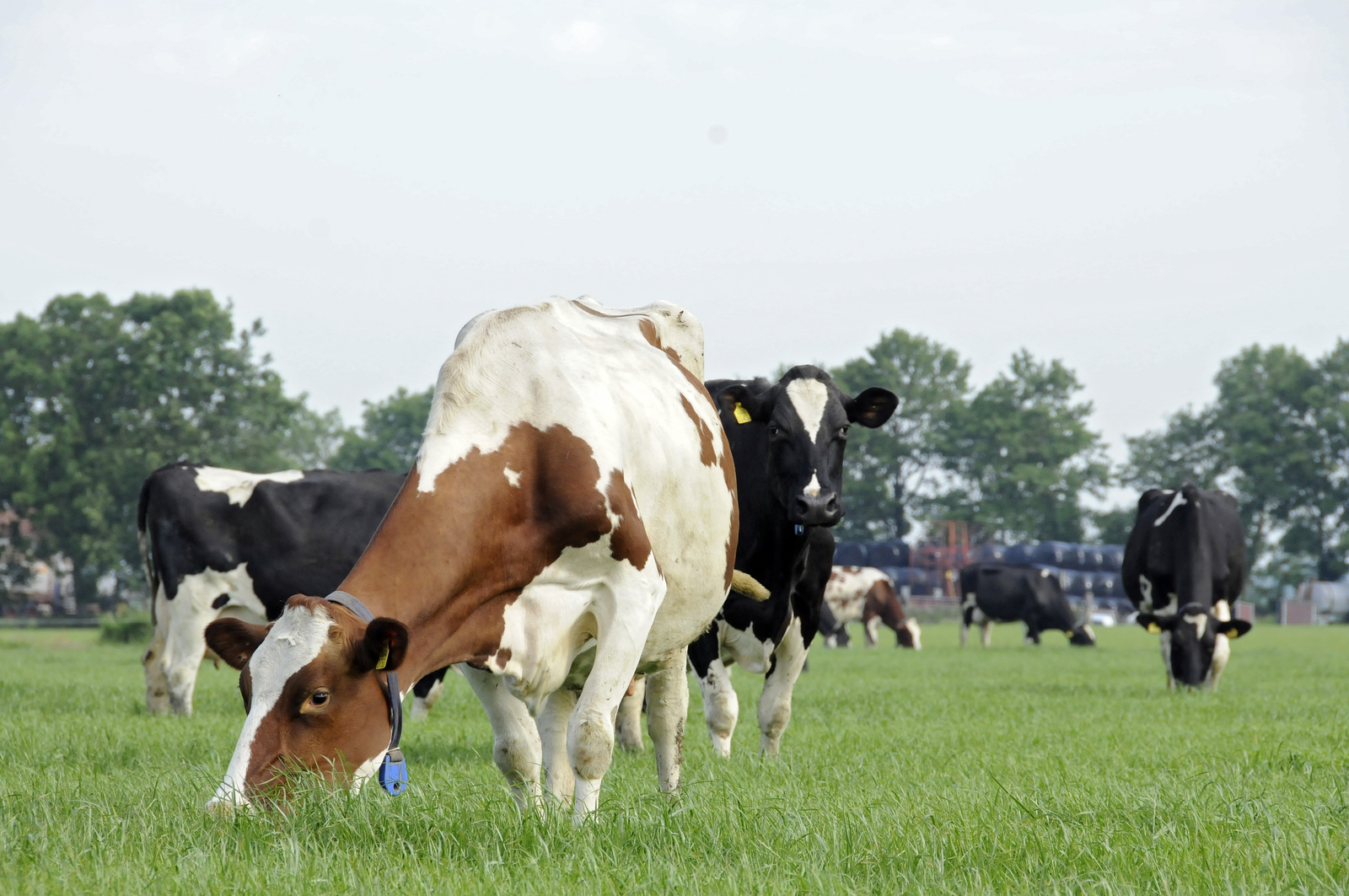Summer and winter milk compared

How is the fatty acid composition of milk fat regulated in the bovine genome? If the regions in the bovine genome can be identified, the information can be used to influence the composition of milk fat through breeding measures. Many correlations between the cow’s genetic predisposition and the fatty acid composition of its winter milk have been confirmed for summer milk.
By Jan Blom
The biosynthesis of milk fat is a complex process in which various molecular routes can be distinguished. These routes are driven by a lot of genes. Bionaz and Loor have demonstrated in 2008 that genes in the cow’s mamma tissue are switched on during the lactation cycle which are involved in processes like uptake of fatty acids from blood, intracellular transport of fatty acids, intracellular activation of short- and long-chain fatty acids, de novo fatty acid synthesis, desaturation, triacylglycerol (triglyceride) synthesis, breakdown of ketone bodies and regulation of transcription.
All of these genes are under strict control to enable effectively coordinated synthesis of milk fat. The fat content of milk in Dutch cows varies from 3.3% to 5.5%. That variation is attributable in part to environmental factors like feed and season. Another part of the variation rests upon individual differences in the cows’ genetic predisposition. The fatty acid composition of milk fat, too, varies as a result of genetic and environmental factors. The contribution of genetics to the levels of fatty acids in milk fat varies from one fatty acid to another. Short- to medium-chain fatty acids (from C4:0 to C16:0) are synthesised the novo in mamma tissue and have a relatively high level of genetic predisposition (ca. 60%). Longer-chain fatty acids come from blood lipids, which predominantly derive from feed and endogenous adipose tissue. The level of genetic predisposition of such long-chain fatty acids is about 25%.
Manipulating the fatty acid composition of milk through breeding measures
Researchers at the Animal Breeding and Genomics Centre of Wageningen University attempt to identify regions in the bovine genome, and even individual genes, that are responsible for this genetic variation. During the International Symposium on Milk Genomics & Human Health in 2012, Aniek Bouwman presented results of her studies of genome regions involved in the fatty acid composition of summer and winter milk. Bouwman stated that a better understanding of the influence of cows’ genetic predisposition to the fatty acid composition of their milk may raise opportunities for manipulating the composition of milk.
In 2011, her team published data on the correlation between genetic predisposition and fatty acid composition in samples of winter milk from Dutch cows. They had sampled morning milk and blood from 2,000 Holstein Frisian cows in their first lactation period kept on 400 farms distributed across the Netherlands. Subsequently, they conducted a genome-wide study of the association between the prevalence of 50,000 single-nucleotide polymorphisms (SNPs) in the blood sample genome and the levels of the most prevalent fatty acids in milk fat, i.e. the medium-chain saturated fatty acids and unsaturated fatty acids with a chain length of C10:1 to 18:1 as well as conjugated linoleic acid (CLA, cis9,trans11 18:2). The fatty acid levels were measured by gas chromatography.
Genes with an influence on fatty acid composition identified
The study revealed that 54 regions located on 29 chromosomes correlated significantly with the levels of one or more of these fatty acids in milk fat. These regions were found in particular on chromosomes 14, 19 and 26. Some of these regions are known to contain genes involved in fatty acid synthesis or to be associated with the fat content of milk. One conclusion drawn from the study was that the presence of medium-chain saturated fatty acids and unsaturated fatty acids in milk fat is controlled predominantly by the genes DGAT1 (acyl-coA diacylglycerol acyltransferase) on chromosome 14 and SCD1 (stearoyl-coA desaturase) on chromosome 26. Other regions in the genome contribute modestly to overall genetic variance but are still relevant for determining the genetic value of individual cows.
Comparable results found in summer milk
Bouwman presented results of a comparable study of Dutch milk samples taken in summer from the same cows from which winter milk had been sampled in the study published in 2011. In the summer many cows stay outdoors so that they eat grass in addition to controlled feed. Indeed, seasonal environmental factors were found to result in differences in the fatty acid composition of milk fat. Table 1 shows that summer milk had lower levels of unsaturated fatty acids and higher levels of saturated fatty acids than winter milk. However, the phenotypical correlations between the fatty acid levels in summer and winter milk were lower than the genetic correlations. Bouwman concluded that in winter and summer the same genes are involved in the cows’ genetic predisposition for fatty acid composition of milk fat.
In the genome-wide association study of summer milk samples many associations were found that had also been seen in winter milk samples. In addition, eight new genome regions with an influence on fatty acid composition were identified. In some of these regions candidate genes with a possible effect on fatty acid composition of milk fat were found. Bouwman: “Our study with summer milk confirm the conclusions drawn from our winter milk study. That makes the notion plausible that the genome regions we found are involved indeed in the regulation of the fatty acid composition of milk fat. Our outcomes may serve as a basis for further fine-tuning studies.”
References are available on request.
Edited and reprinted from the Volume 25 issue of NutritionMagazine by NZO, Dutch Dairy Association.











